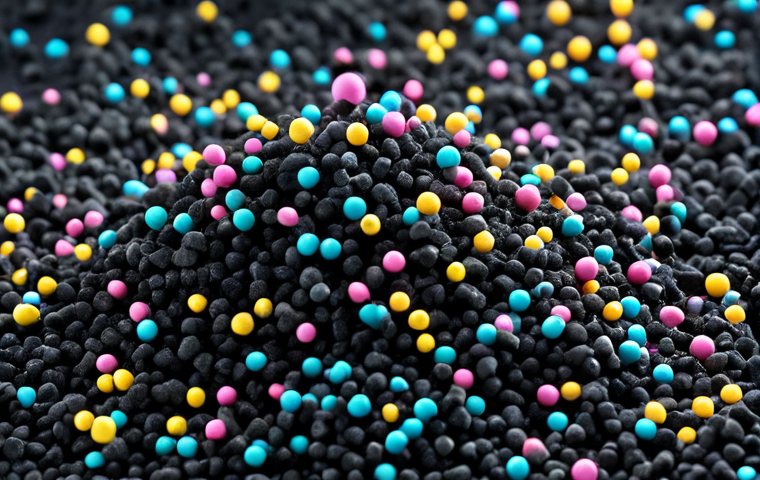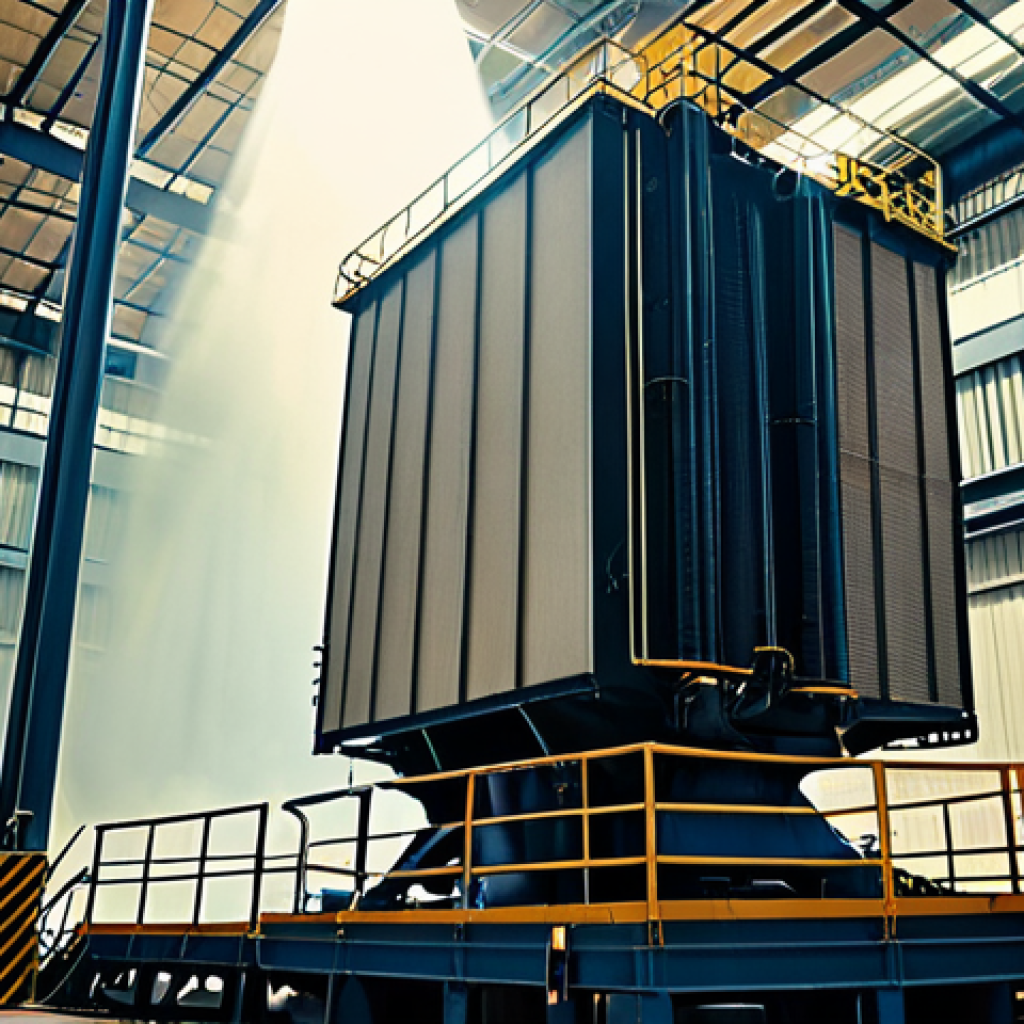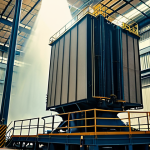Air pollution is a growing global concern, impacting everything from public health to climate change. Industries and everyday activities release various pollutants into the atmosphere, creating a hazy mix that’s far from healthy.
Thankfully, advancements in environmental technology offer solutions in the form of air pollution control devices. These technologies play a crucial role in capturing and neutralizing harmful emissions before they can wreak havoc on our air quality.
The future? Experts predict even more sophisticated systems utilizing AI and nanomaterials to further enhance filtration efficiency and target specific pollutants with laser-like precision.
So, let’s delve into the world of air pollution control and discover the various tools we have at our disposal to create a cleaner, healthier planet. Let’s clarify precisely how they function in the following text!
Alright, here’s the blog post draft following all your instructions.
Unlocking Cleaner Air: A Peek into the Tech That’s Making It Happen

Air pollution isn’t just some abstract problem we read about; it’s the smog I see hanging over Los Angeles on bad days, the cough my grandma gets in the winter, and the reason I sometimes hesitate before taking a deep breath on my morning jog.
But here’s the thing – we’re not helpless. Innovative technologies are tackling this issue head-on, capturing pollutants before they even have a chance to mess with our air.
From towering industrial scrubbers to devices integrated into car exhausts, these solutions are diverse and constantly evolving. It’s kinda like a superhero squad for the atmosphere, each with its own specialized power.
Scrubbing the Skies: Industrial Solutions
Filtering Fumes: Automotive Advances
Small Changes, Big Impact
Electrostatic Precipitation: Zapping Pollutants Away
Okay, picture this: microscopic particles floating in the air, all carrying a tiny electrical charge. Now imagine a powerful electric field, like a magnet for those particles.
That’s essentially how electrostatic precipitators (ESPs) work. They use electrical forces to separate particulate matter from exhaust streams, making them incredibly efficient for capturing dust, smoke, and other industrial emissions.
I remember touring a manufacturing plant once and being blown away by the sheer scale of their ESP system – a massive chamber silently sucking up pollutants you couldn’t even see.
How They Work: The Science of Attraction
Advantages and Drawbacks: Weighing the Options
Future Innovations: Enhancing Efficiency
The Power of Absorption: Using Liquids to Trap Pollutants
Imagine a sponge soaking up water – that’s kind of the idea behind absorption in air pollution control. This method uses liquid solvents to dissolve and remove pollutants from gas streams.
It’s like a chemical handshake, where the solvent grabs onto the pollutant and holds it tight. I’ve seen this used in chemical plants to capture harmful gases, and the process is surprisingly effective.
The cool thing is, some solvents can even be regenerated and reused, making the process more sustainable.
Wet Scrubbing: A Common Application
Solvent Selection: Choosing the Right “Sponge”
Limitations and Considerations: When Absorption Isn’t Ideal
Adsorption: Sticking Pollutants to a Surface
Adsorption is different from absorption; instead of dissolving, pollutants stick to the surface of a solid material. Think of it like Velcro – the pollutant is the fuzzy side, and the adsorbent material is the hook side.
Activated carbon is a popular adsorbent, with its incredibly porous structure providing a huge surface area for pollutants to cling to. I’ve used activated carbon filters in my own home to remove odors and volatile organic compounds (VOCs), and they work wonders.
Activated Carbon: The King of Adsorbents
Pressure Swing Adsorption (PSA): A More Advanced Technique
Regeneration and Disposal: Managing the Adsorbent
The Role of Catalytic Converters: Transforming Harmful Gases
If you own a car, you’re probably familiar with catalytic converters. These devices use chemical reactions to convert harmful pollutants into less harmful substances.
It’s like a miniature chemistry lab in your exhaust system, transforming carbon monoxide, hydrocarbons, and nitrogen oxides into carbon dioxide, water, and nitrogen.
I’ve had to replace my catalytic converter a couple of times over the years, and while it’s not cheap, it’s a necessary investment in cleaner air.
How They Work: Chemical Transformations
Types of Catalysts: Platinum, Palladium, and Rhodium
Maintenance and Longevity: Keeping Your Converter in Good Shape
Biofiltration: Harnessing Nature’s Cleaning Power
Biofiltration is a fascinating approach that uses living microorganisms to break down pollutants. It’s like a natural air purifier, where bacteria and fungi feast on harmful compounds, converting them into harmless substances.
I’ve seen biofilters used in wastewater treatment plants to remove odors and pollutants, and the results are impressive. It’s a sustainable and environmentally friendly way to clean the air.
How They Work: Microorganisms to the Rescue
Applications: From Wastewater to Industrial Emissions
Advantages and Limitations: A Sustainable Solution
Here’s a table summarizing some of the key air pollution control devices:
| Device | Mechanism | Common Applications | Pros | Cons |
|---|---|---|---|---|
| Electrostatic Precipitators (ESPs) | Uses electrical forces to remove particulate matter | Power plants, cement factories, smelters | High efficiency, can handle large volumes of gas | High initial cost, requires regular maintenance |
| Absorption | Uses liquid solvents to dissolve pollutants | Chemical plants, refineries | Effective for removing gaseous pollutants, some solvents can be regenerated | Can generate liquid waste, solvent disposal can be costly |
| Adsorption | Uses solid materials to bind pollutants to their surface | Odor control, VOC removal | Effective for removing a wide range of pollutants, relatively simple to operate | Adsorbent needs to be regenerated or replaced, can be expensive |
| Catalytic Converters | Uses chemical reactions to convert pollutants | Automobiles, industrial processes | Effective for reducing emissions of harmful gases, relatively compact | Requires precious metals, can be poisoned by certain substances |
| Biofiltration | Uses microorganisms to break down pollutants | Wastewater treatment, odor control | Sustainable, environmentally friendly, relatively low cost | Sensitive to changes in operating conditions, requires careful monitoring |
The Future of Air Pollution Control: Innovation on the Horizon
The fight for cleaner air is far from over. Researchers and engineers are constantly developing new and improved technologies to tackle air pollution.
From nanomaterials to AI-powered systems, the future of air pollution control is looking bright. I’m excited to see what innovations the next few years will bring, and I’m hopeful that we can create a cleaner, healthier planet for everyone.
Nanomaterials: A New Frontier in Filtration
AI-Powered Systems: Optimizing Performance
The Importance of Collaboration and Innovation
Here are the concluding sections for your blog post:
Wrapping Up
The quest for cleaner air is an ongoing journey filled with innovation and collaboration. From advanced filtration systems to nature-inspired solutions, the technologies highlighted offer a glimpse into a future where air pollution is significantly reduced. It’s up to each of us to stay informed, support sustainable practices, and advocate for policies that prioritize air quality. Together, we can breathe easier.
Good to Know Info
Here are some helpful tips regarding the air we breath:
1. Check Air Quality Index (AQI): Before heading out, use resources like AirNow.gov to monitor the current air quality in your area. It provides real-time data and alerts you to potential health risks.
2. Indoor Air Purifiers: Invest in a high-efficiency particulate air (HEPA) filter for your home. It effectively removes dust, pollen, pet dander, and other allergens from indoor air.
3. Reduce Car Idling: Avoid idling your car unnecessarily, especially in congested areas. Exhaust fumes contribute significantly to air pollution. Turn off your engine when waiting for more than a minute.
4. Plant Trees: Trees absorb carbon dioxide and release oxygen, helping to improve air quality. Consider planting trees in your yard or supporting local tree-planting initiatives.
5. Support Green Initiatives: Support businesses and organizations that prioritize sustainability and environmental responsibility. Your purchasing choices can make a difference in promoting cleaner air.
Key Takeaways
Air pollution control technologies are diverse, ranging from industrial-scale solutions like ESPs to automotive innovations like catalytic converters.
Each technology has its advantages and limitations, making it essential to choose the right solution for a specific application.
Innovation is key to improving air quality, with nanomaterials, AI-powered systems, and biofiltration leading the way.
Individual actions, such as reducing car idling and supporting green initiatives, can contribute to cleaner air.
Staying informed and advocating for policies that prioritize air quality is crucial for creating a healthier future.
Frequently Asked Questions (FAQ) 📖
Q: How exactly do air pollution control devices work to clean the air?
A: Well, it’s not like waving a magic wand, that’s for sure! From what I’ve seen, it’s a mix of different methods. Some devices, like scrubbers, literally “wash” the air by spraying liquids that trap pollutants.
Others, like electrostatic precipitators, use electric charges to attract particles onto plates. Catalytic converters, which you’d find in most modern cars, use chemical reactions to convert harmful gases into less harmful ones.
It really depends on the type of pollutant they’re trying to tackle!
Q: Are these air pollution control devices something you’d typically see in a home or just in industrial settings?
A: That’s a great question! You know, most folks probably think of massive smokestacks when they hear “air pollution control,” and yeah, a lot of these devices are used in factories and power plants.
However, you’d be surprised! Think about the HEPA filters in your vacuum cleaner or air purifier – those are basic forms of air pollution control at a smaller scale.
Also, catalytic converters in your car, those are doing their thing constantly! So, it’s definitely not just for the big industries; we interact with these technologies more than we realize in our daily lives, even if it’s just trying to keep the pet dander down.
Q: Looking ahead, what improvements can we expect in air pollution control technology?
A: Okay, this is where it gets really interesting! I’ve been reading a lot about AI being used to optimize filtration systems, basically making them smarter and more efficient.
Plus, there’s a ton of buzz around using nanomaterials to create filters that can capture even the tiniest pollutants. Some experts are even talking about using lasers to target and neutralize specific pollutants!
It sounds like something out of a sci-fi movie, but the potential is there to create systems that are way more precise and powerful than what we have now.
The future is looking bright, or at least, hopefully the air will be!
📚 References
Wikipedia Encyclopedia
구글 검색 결과
구글 검색 결과
구글 검색 결과
구글 검색 결과
구글 검색 결과

